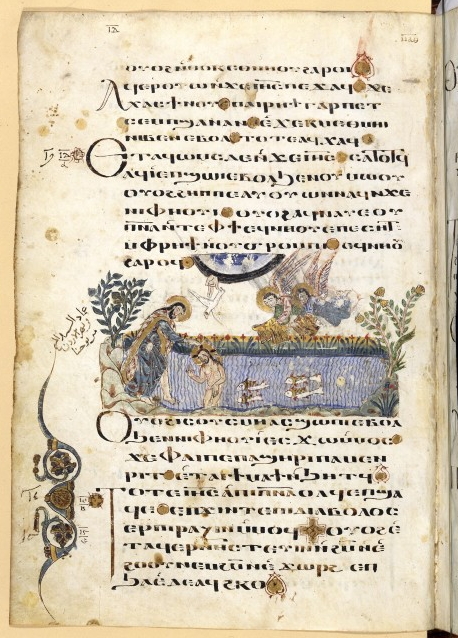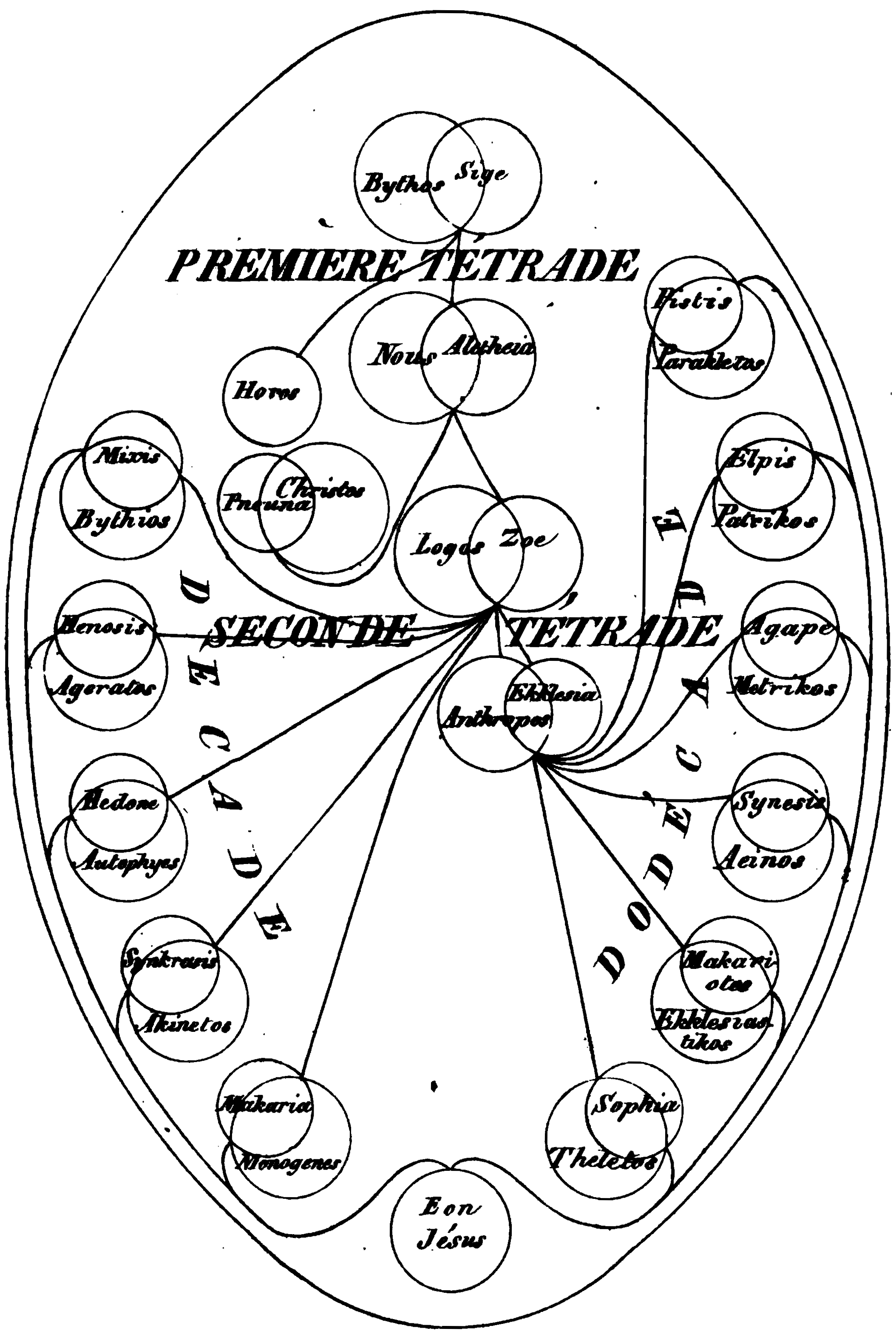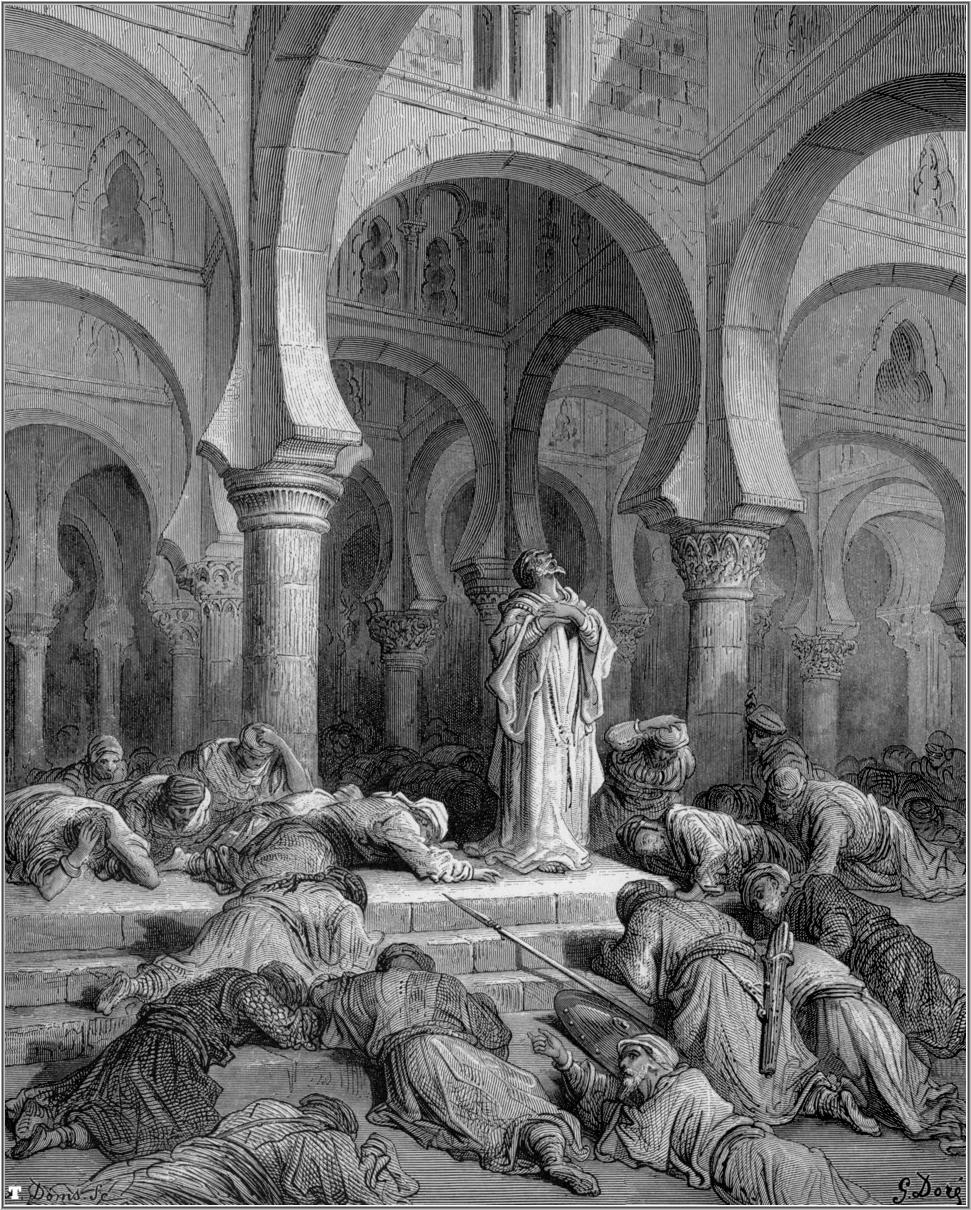|
Prayer Of The Apostle Paul
The Prayer of the Apostle Paul is a New Testament apocryphal work, the first manuscript from the Jung Codex (Codex I) of the Nag Hammadi Library. Written on the inner flyleaf of the codex, the prayer seems to have been added after the longer tractates had been copied. Although the text, like the rest of the codices, is written in Coptic, the title is written in Greek, which was the original language of the text. The manuscript is missing approximately two lines at the beginning. Authorship and Composition Like other early Christian writings, the author of this prayer identifies themself with the historic Apostle Paul to give authority to the text. Consequently, the prayer is widely understood to be a pseudepigraphical work. Because the prayer lacks its opening lines, it is unclear whether there was a title at its beginning. However, a title written in Greek is preserved at the bottom of the treatise, reading "Prayer of the Apostle Paul" and followed by a colophon. The colophon, ... [...More Info...] [...Related Items...] OR: [Wikipedia] [Google] [Baidu] |
New Testament Apocrypha
The New Testament apocrypha (singular apocryphon) are a number of writings by early Christians that give accounts of Jesus and his teachings, the nature of God, or the teachings of his apostles and of their lives. Some of these writings were cited as scripture by early Christians, but since the fifth century a widespread consensus has emerged limiting the New Testament to the 27 books of the modern canon. Roman Catholic, Eastern Orthodox, and Protestant churches generally do not view the New Testament apocrypha as part of the Bible. Definition The word "apocrypha" means "things put away" or "things hidden", originating from the Medieval Latin adjective ''apocryphus'', "secret" or "non-canonical", which in turn originated from the Greek adjective (''apokryphos''), "obscure", from the verb (''apokryptein''), "to hide away". From the Greek prefix "apo" which means "away" and the Greek verb "kryptein" which means "to hide". The general term is usually applied to the books that w ... [...More Info...] [...Related Items...] OR: [Wikipedia] [Google] [Baidu] |
Book Of Job
The Book of Job (; hbo, אִיּוֹב, ʾIyyōḇ), or simply Job, is a book found in the Ketuvim ("Writings") section of the Hebrew Bible (Tanakh), and is the first of the Poetic Books in the Old Testament of the Christian Bible. Scholars are generally agreed that it was written between the 7th and 4th centuries BCE. It addresses theodicy, why God permits evil in the world, through the experiences of the eponymous protagonist. Job is a wealthy and God-fearing man with a comfortable life and a large family; God, having asked Satan ( hbo, הַשָּׂטָן, haśśāṭān, , label=none) for his opinion of Job's piety, decides to take away Job's wealth, family and material comforts, following Satan's accusation that if Job were rendered penniless and without his family, he would turn away from God. Structure The Book of Job consists of a prose prologue and epilogue narrative framing poetic dialogues and monologues. It is common to view the narrative frame as the original core ... [...More Info...] [...Related Items...] OR: [Wikipedia] [Google] [Baidu] |
Coptic Literature
Coptic literature is the body of writings in the Coptic language of Egypt, the last stage of the indigenous Egyptian language. It is written in the Coptic alphabet. The study of the Coptic language and literature is called Coptology. Definition Since the term "Coptic" can have, besides a linguistic sense, an ethnic sense (referring to Copts) and a religious sense (Coptic Christianity), there is the propensity for ambiguity in the term "Coptic literature". Coptic literature is usually defined as that in the Coptic language. It is not usually limited to original compositions, but includes also translations into Coptic (mainly from Greek). It also includes texts believed to have been composed in Coptic, but which are preserved only in translation (mainly in Arabic and Ethiopic). In a broader sense, "Coptic" may include Greek literature produced in Egypt that circulated in the Coptic community. The literature that the Copts wrote in Arabic is generally treated separately as Copt ... [...More Info...] [...Related Items...] OR: [Wikipedia] [Google] [Baidu] |
Gnostic Apocrypha
Gnosticism (from grc, γνωστικός, gnōstikós, , 'having knowledge') is a collection of religious ideas and systems which coalesced in the late 1st century AD among Jewish and early Christian sects. These various groups emphasized personal spiritual knowledge (''gnosis'') above the orthodox teachings, traditions, and authority of religious institutions. Gnostic cosmogony generally presents a distinction between a supreme, hidden God and a malevolent lesser divinity (sometimes associated with the Yahweh of the Old Testament) who is responsible for creating the material universe. Consequently, Gnostics considered material existence flawed or evil, and held the principal element of salvation to be direct knowledge of the hidden divinity, attained via mystical or esoteric insight. Many Gnostic texts deal not in concepts of sin and repentance, but with illusion and enlightenment. Gnostic writings flourished among certain Christian groups in the Mediterranean world around ... [...More Info...] [...Related Items...] OR: [Wikipedia] [Google] [Baidu] |
Pauline Epistles
The Pauline epistles, also known as Epistles of Paul or Letters of Paul, are the thirteen books of the New Testament attributed to Paul the Apostle, although the authorship of some is in dispute. Among these epistles are some of the earliest extant Christian documents. They provide an insight into the beliefs and controversies of early Christianity. As part of the canon of the New Testament, they are foundational texts for both Christian theology and ethics. Most scholars believe that Paul actually wrote seven of the Pauline epistles (Galatians, Romans, 1 Corinthians, 2 Corinthians, Philemon, Philippians, 1 Thessalonians), while three of the epistles in Paul's name are widely seen as pseudepigraphic (First Timothy, Second Timothy, and Titus).New Testament Letter Structure fro [...More Info...] [...Related Items...] OR: [Wikipedia] [Google] [Baidu] |
Valentinianism
Valentinianism was one of the major Gnostic Christian movements. Founded by Valentinus in the 2nd century AD, its influence spread widely, not just within Rome but also from Northwest Africa to Egypt through to Asia Minor and Syria in the East. Later in the movement's history it broke into an Eastern and a Western school. Disciples of Valentinus continued to be active into the 4th century AD, after the Roman Emperor Theodosius I issued the Edict of Thessalonica (380 AD), which declared Nicene Christianity as the State church of the Roman Empire. The doctrine, practices and beliefs of Valentinus and the Gnostic movement that bore his name were condemned as heretical by proto-orthodox Christian leaders and scholars. Prominent Church Fathers such as Irenaeus of Lyons and Hippolytus of Rome wrote against Gnosticism. Because early church leaders encouraged the destruction of Gnostic texts, most evidence for the Valentinian theory comes from its critics and detractors, most notably ... [...More Info...] [...Related Items...] OR: [Wikipedia] [Google] [Baidu] |
Pleroma
Pleroma ( grc-koi, πλήρωμα, literally "fullness") generally refers to the totality of divine powers. It is used in Christian theological contexts, especially in Gnosticism. The term also appears in the Epistle to the Colossians, which is traditionally attributed to Paul the Apostle. The word is used 17 times in the New Testament. The word literally means "fullness", from the verb (, "to fill"), from ( πλήρης, "full").Svenska Akademiens ordbok, search on the word ''Pleroma'/ref> Christianity New Testament The word itself is a relative term, capable of many shades of meaning, according to the subject with which it is joined and the antithesis to which it is contrasted. It denotes the result of the action of the verb ''pleroun;'' but ''pleroun'' is either *to fill up an empty thing (''e.g.'' ), or *to complete an incomplete thing (''e.g.'' ); and the verbal substantive in -''ma'' may express either #the objective accusative after the verb, 'the thing filled or com ... [...More Info...] [...Related Items...] OR: [Wikipedia] [Google] [Baidu] |
Epistle To The Romans
The Epistle to the Romans is the sixth book in the New Testament, and the longest of the thirteen Pauline epistles. Biblical scholars agree that it was composed by Paul the Apostle to explain that salvation is offered through the gospel of Jesus Christ. Romans was likely written while Paul was staying in the house of Gaius in Corinth. The epistle was probably transcribed by Paul's amanuensis Tertius and is dated AD late 55 to early 57. Consisting of 16 chapters, versions with only the first 14 or 15 chapters circulated early. Some of these recensions lacked all reference to the original audience of Christians in Rome making it very general in nature. Other textual variants include subscripts explicitly mentioning Corinth as the place of composition and name Phoebe, a deacon of the church in Cenchreae, as the messenger who took the epistle to Rome. Prior to composing the epistle, Paul had evangelized the areas surrounding the Aegean Sea and was eager to take the gospel fa ... [...More Info...] [...Related Items...] OR: [Wikipedia] [Google] [Baidu] |
Book Of Isaiah
The Book of Isaiah ( he, ספר ישעיהו, ) is the first of the Latter Prophets in the Hebrew Bible and the first of the Major Prophets in the Christian Old Testament. It is identified by a superscription as the words of the 8th-century BCE prophet Isaiah ben Amoz, but there is extensive evidence that much of it was composed during the Babylonian captivity and later. Johann Christoph Döderlein suggested in 1775 that the book contained the works of two prophets separated by more than a century, and Bernhard Duhm originated the view, held as a consensus through most of the 20th century, that the book comprises three separate collections of oracles: Proto-Isaiah ( chapters 1– 39), containing the words of the 8th-century BCE prophet Isaiah; Deutero-Isaiah ( chapters 40– 55), the work of an anonymous 6th-century BCE author writing during the Exile; and Trito-Isaiah ( chapters 56– 66), composed after the return from Exile. Isaiah 1– 33 promises judgment and restoration f ... [...More Info...] [...Related Items...] OR: [Wikipedia] [Google] [Baidu] |
Redeemer (Christianity)
In Christian theology, Jesus in Christianity, Jesus is sometimes referred to by the title Redeemer. This refers to the Christian soteriology, salvation he accomplished, and is based on the metaphor of Redemption (theology)#In Christianity, redemption, or "buying back". In the New Testament, ''redemption'' is used to refer both to deliverance from sin and to freedom from captivity. Although the gospels do not use the title "Redeemer", redemption is used in several of Pauline epistles, Paul's letters. Leon Morris says that "Paul uses the concept of redemption primarily to speak of the saving significance of the death of Christ." Universality The New Testament speaks of Christ as the one Saviour for all people.On Christ's role as universal Saviour, cf. Gerald O'Collins, ''Salvation for All: God's Other Peoples'', OUP (2008). The First Epistle of John says that Jesus is "the propitiation for our sins and not for ours only but also for the sins of the world" (wikisource:Bible (Ameri ... [...More Info...] [...Related Items...] OR: [Wikipedia] [Google] [Baidu] |
Nag Hammadi Library
The Nag Hammadi library (also known as the " Chenoboskion Manuscripts" and the "Gnostic Gospels") is a collection of early Christian and Gnostic texts discovered near the Upper Egyptian town of Nag Hammadi in 1945. Thirteen leather-bound papyrus codices buried in a sealed jar were found by a local farmer named Muhammed al-Samman. The writings in these codices comprise 52 mostly Gnostic treatises, but they also include three works belonging to the ''Corpus Hermeticum'' and a partial translation/alteration of Plato's ''Republic''. In his introduction to ''The Nag Hammadi Library in English'', James Robinson suggests that these codices may have belonged to a nearby Pachomian monastery and were buried after Saint Athanasius condemned the use of non-canonical books in his Festal Letter of 367 A.D. The discovery of these texts significantly influenced modern scholarship's pursuit and knowledge of early Christianity and Gnosticism. The contents of the codices were written in the C ... [...More Info...] [...Related Items...] OR: [Wikipedia] [Google] [Baidu] |
Invocation
An invocation (from the Latin verb ''invocare'' "to call on, invoke, to give") may take the form of: *Supplication, prayer or spell. *A form of possession. *Command or conjuration. *Self-identification with certain spirits. These forms are described below, but are not mutually exclusive. See also Theurgy. Supplication or prayer As a supplication or prayer, an invocation implies calling upon God, a god, goddess, or person. When a person calls upon God, a god, or goddess to ask for something (protection, a favour, or his/her spiritual presence in a ceremony) or simply for worship, this can be done in a pre-established form or with the invoker's own words or actions. An example of a pre-established text for an invocation is the Lord's Prayer. All religions in general use invoking prayers, liturgies, or hymns; see for example the mantras in Hinduism and Buddhism, the Egyptian ''Coming Out by Day'' (aka ''Book of the Dead''), the Orphic Hymns and the many texts, still prese ... [...More Info...] [...Related Items...] OR: [Wikipedia] [Google] [Baidu] |








